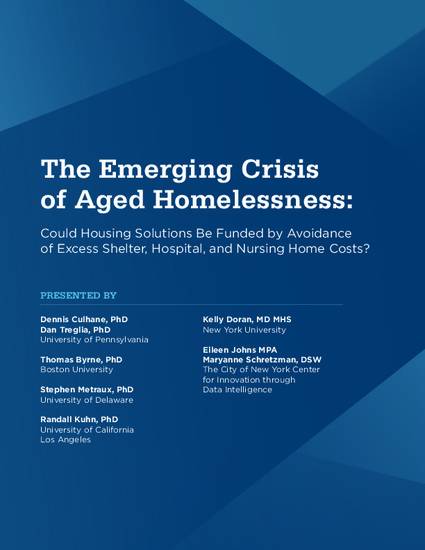
Other
The Emerging Crisis of Aged Homelessness: Could Housing Solutions Be Funded from Avoidance of Excess Shelter, Hospital and Nursing Home Costs?
(2019)
Abstract
The population of individuals who are homeless and elderly is expected to nearly triple over the next decade. The projected upturn of the aging homeless population—concentrated among those born between 1955 – 1966—will also lead to a surge of cost increases associated with health care and shelter needs. The multi-site study includes Boston, New York City, and Los Angeles County, but is indicative of growth that is expected to take place across the country. More specifically, the national population of people 65 or older experiencing homelessness is estimated to grow from 40,000 today to 106,000 by 2030. The predicted spike is based on projections from 30 years of existing census data, and local HMIS data in the three cities. A number of housing interventions—including permanent supportive housing, shallow subsidies, and rapid re-housing—could reduce excess use of hospitals, shelters and nursing homes, with the offsets covering the costs of the housing interventions.
Disciplines
Publication Date
January 20, 2019
Citation Information
Dennis P Culhane, Dan Treglia, Thomas Byrne, Stephen Metraux, et al.. "The Emerging Crisis of Aged Homelessness: Could Housing Solutions Be Funded from Avoidance of Excess Shelter, Hospital and Nursing Home Costs?" (2019) Available at: http://works.bepress.com/dennis_culhane/223/
